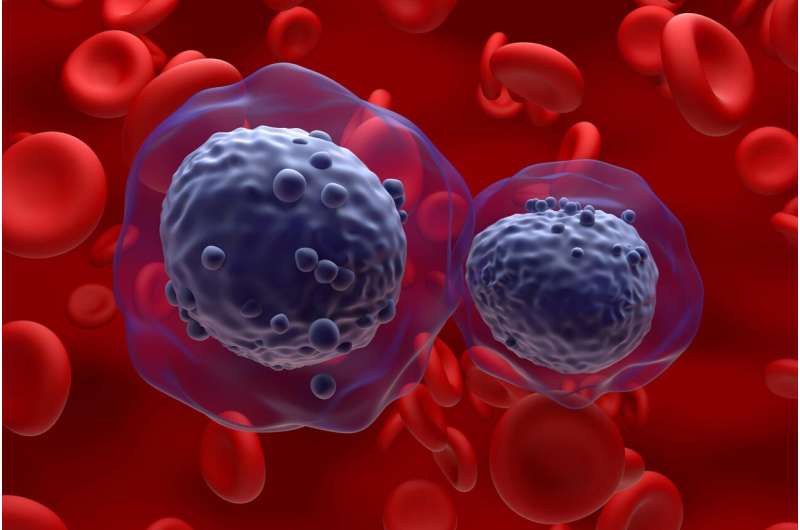This article has been reviewed according to Science X's editorial process and policies. Editors have highlighted the following attributes while ensuring the content's credibility:
fact-checked
trusted source
proofread
Scientists uncover technique to cut off cancer's fuel supply

Scientists at The University of Texas at Austin have discovered how an aggressive and deadly form of leukemia fuels its growth. In an experimental study, they were able to curb the cancer's growth without harming healthy cells. The finding provides clues for future drug developers about how to increase the effectiveness of one type of chemotherapy.
The study, led by Xiaolu Cambronne of the Department of Molecular Biosciences, in collaboration also with researchers at Dell Medical School and in the Department of Nutritional Sciences, is published in Cell Metabolism.
Acute myeloid leukemia (AML) is an aggressive cancer that starts in the blood-forming cells of the bone marrow. Known for rapid expansion, the cancer kills approximately 11,000 Americans each year. Most of the cases of AML occur in adults over 65, a population that often responds poorly to aggressive treatments, such as bone marrow transplants, and thus has limited options.
Cambronne and her colleagues uncovered an important clue about cancer when they discovered AML patients with poorer outcomes had elevated levels of a cellular transporter called SLC25A51. In healthy cells, this transporter moves cellular fuel into a cell's mitochondria, providing energy for the cell's processes. Think of it like a fuel line in an engine. Researchers determined that in AML cells, the transporter levels are increased, like installing a bigger fuel line, sending cellular replication into overdrive.
By lowering the transporter levels, the researchers effectively put a clamp on the fuel line: cancer cells died off, the disease progressed much more slowly, and the animal models survived longer.
"This is a new potential therapeutic target for a hard-to-treat disease," Cambronne said. "It's known for aggressive expansion and for becoming resistant to treatment."
Lowering SLC25A51 did not harm normal bone marrow cells, only the cancerous ones.
"It appears that we can take these transporter levels back to a normal baseline, or even a little below that, and healthy cells are not negatively impacted," Cambronne said. "That makes it a more targeted therapy."
Additionally, when the lowered transporter levels were combined with 5-azacytidine, a type of chemotherapy used in AML patients, it increased survivability and shrank tumors. It appeared the lower transporter levels made the cancer cells more vulnerable to the chemo drug.
While there are currently no drugs that lower SLC25A51, researchers say the next step is developing a compound that can do this safely in the human body. In this study in animals, researchers used gene editing in cells to create a sensitivity to a common antibiotic in order to control transporter levels.
More information: Mu-Jie Lu et al, SLC25A51 decouples the mitochondrial NAD+/NADH ratio to control proliferation of AML cells, Cell Metabolism (2024). DOI: 10.1016/j.cmet.2024.01.013




















